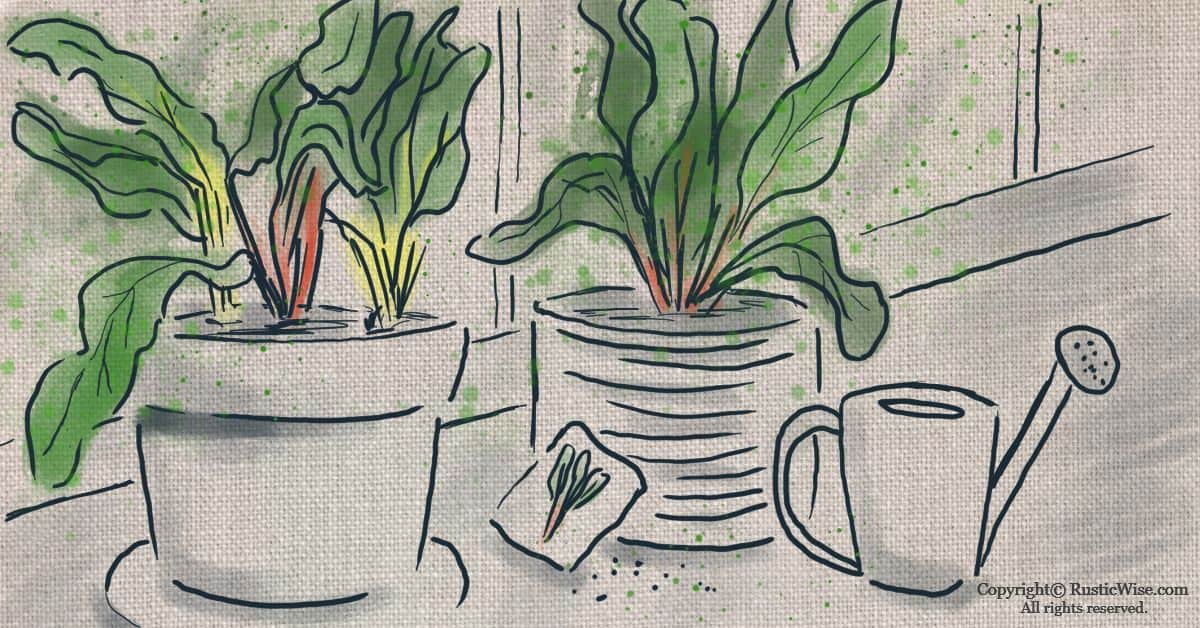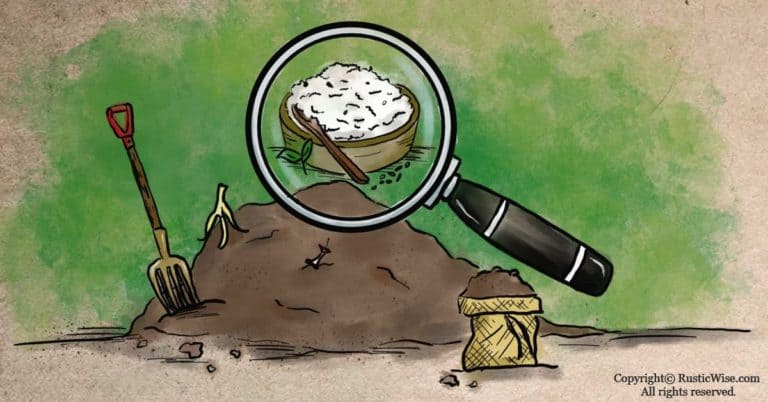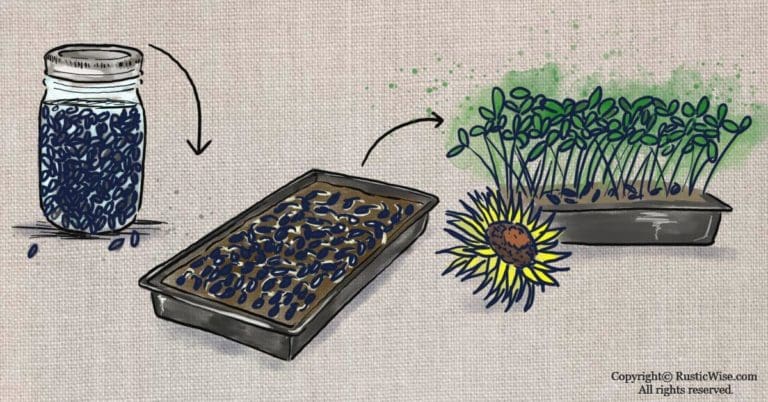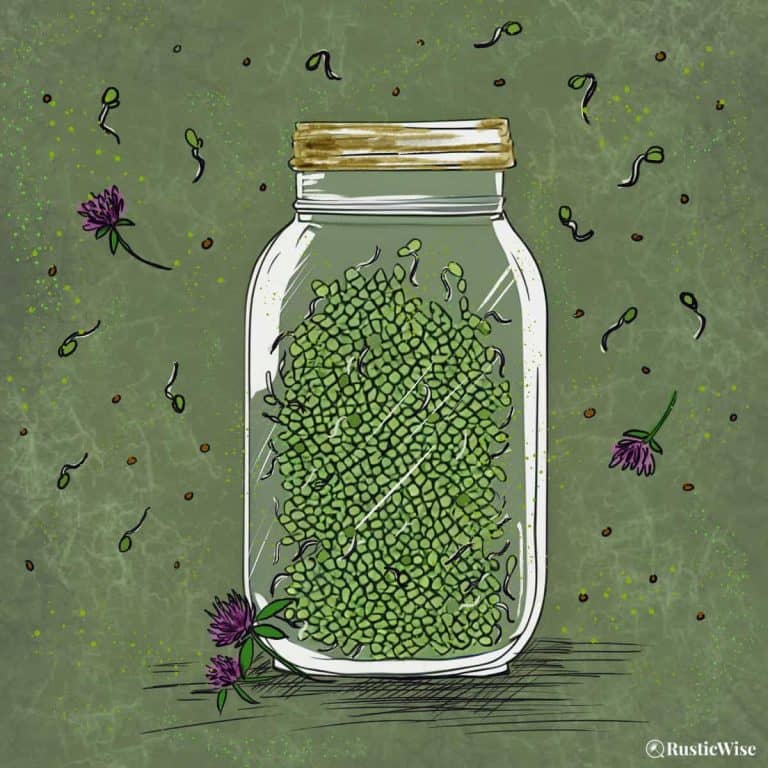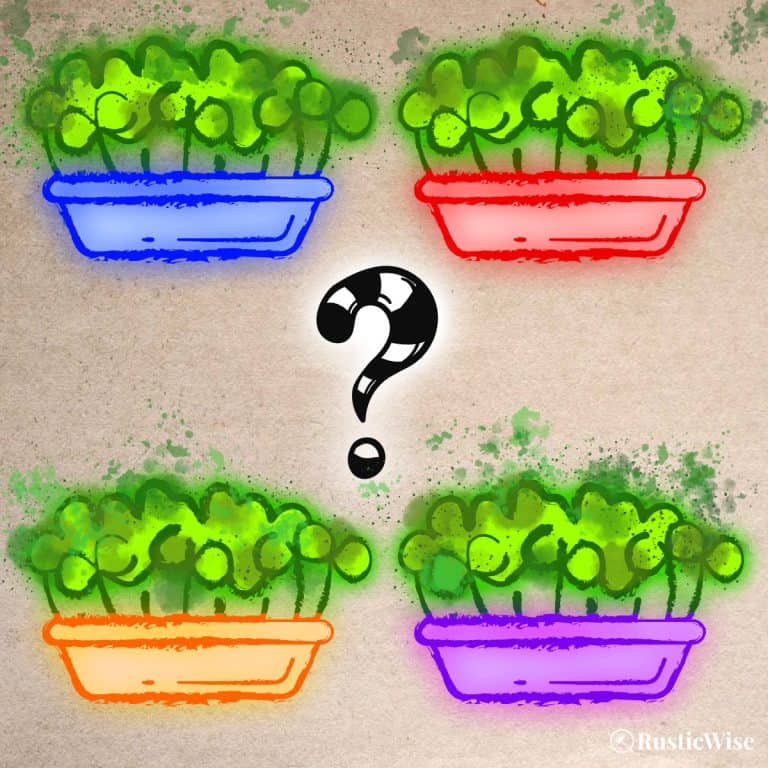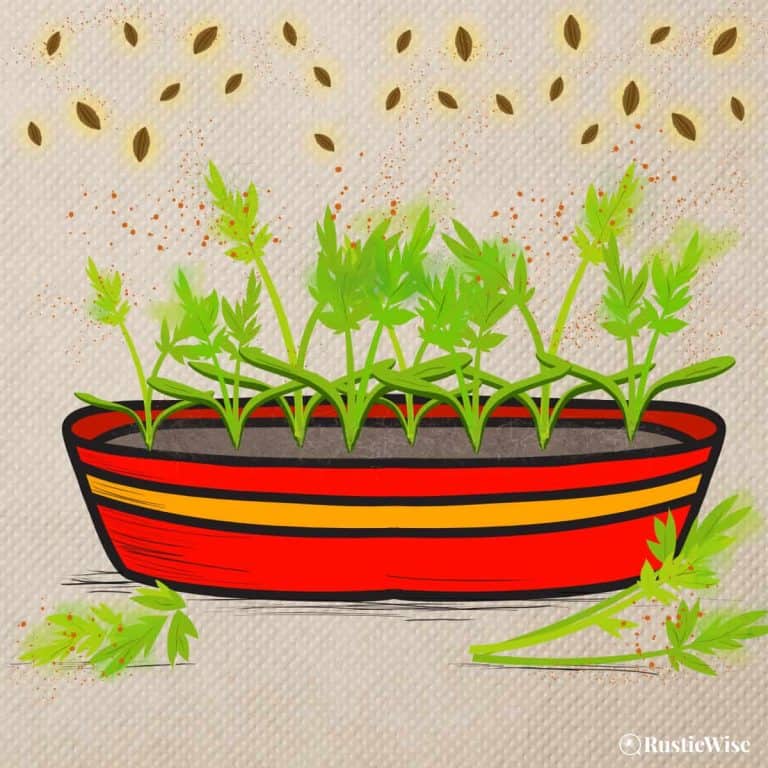Growing Swiss Chard Indoors + 8 Tasty Recipes
A plant that’s beautiful, healthy, and easy-to-grow indoors and out—what more could a gardener ask for?
Swiss chard (Beta vulgaris) is a biennial meaning it’ll regrow after harvesting. Also known as spinach beet, leaf beet, seakale beet, or silver beet, it belongs to the Amaranthaceae family, the same family as beets. Unlike beets which have deep roots and fewer leaves, chard develops an abundance of wide, midribbed leaves with a fairly undeveloped root. While many other plants aren’t suitable for indoor gardening, growing Swiss chard indoors in a container makes perfect sense.
There’s nothing like having a source of fresh greens even in the cold, winter months. So gather a pot or two along with some soil mix, and let’s take a look at growing swiss chard indoors!
Reasons why you should grow Swiss chard
There are plenty of reasons why you should consider planting this leafy green.
- Regrows: As a biennial plant, Swiss chard regrows after harvesting and should last for two years.
- Hardy and low-maintenance: Able to withstand early spring and fall frosts, Swiss chard is a hardy plant. It also is able to withstand heat and doesn’t bolt in hot weather the way spinach tends to.
- Great indoors and outdoors: The ideal plant for outdoor gardens as well as indoor, or container gardening (calling all urban gardeners!). Swiss chard is fairly resilient and is able to make the transition from outdoors to indoors, or vice versa.
- Nutrient-rich: Swiss chard is one leafy green deserving of more praise for its nutritional properties. Full of calcium, iron, and dietary fiber, it also contains: vitamin A, vitamin C, vitamin E, vitamin K, and Vitamin B6. Just one cup of raw chard contains 374 percent DV of vitamin K, and 44 percent DV of vitamin A.
- Versatile culinary uses: Easy to use raw or cooked, Swiss chard tastes similar to spinach and can be used as a spinach-substitute in many recipes.
- Beautiful: While beauty is in the eye of the beholder, it’s hard not to appreciate the brightly colored stems ranging from red to pink to yellow to white, and lush greens of Swiss chard. Some people plant chard purely for ornamental reasons.
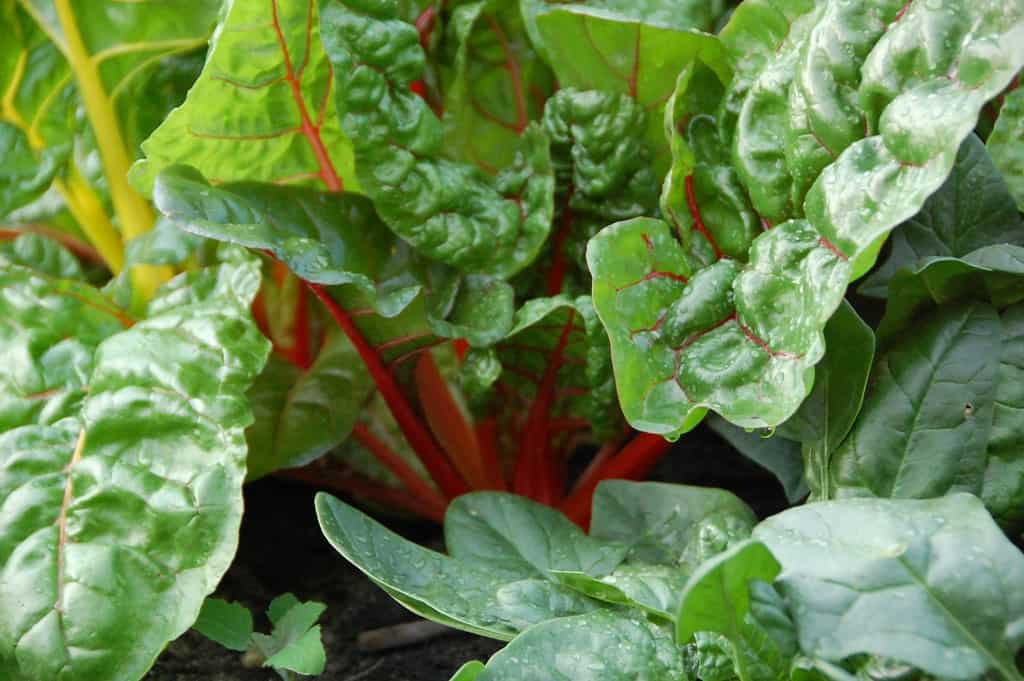
Credit: eren {sea+prairie} / Flickr, abundance
Swiss chard indoor growing conditions
These plants are sun lovers and prefer full sun if possible (at least 12 hours a day). So if you have a sunny windowsill or patio, you’re good to go (otherwise you’ll need to use a grow light). If you live in a hot climate, Swiss chard welcomes partial shade during the hotter summer months.
Swiss chard aren’t too fussy about the type of soil, as long as it’s well-drained. So most kinds of soil potting mix you have will do. Throwing in some organic compost always helps. The ideal soil for chard is pH 6.0 to 7.0.
Growing swiss chard indoors works well as Swiss chard roots aren’t too big or deep, and your plant containers don’t need to be either. Just ensure your pots have drainage holes as chard prefers well-drained soil.
Seeds germinate best at 85 degrees Fahrenheit (29 degrees Celsius), but do fine anywhere between 40-95 degrees Fahrenheit (4-35 Celsius).
Growing Swiss chard indoors from seed
Can Swiss chard be started indoors? Yes, absolutely! You can plant chard seeds indoors any time of year. Swiss chard does great in containers which is handy if you want to put them outdoors during the spring and summer, or keep them indoors all year.
You don’t need a huge container either (which is handy if you’re short on space).
Tip: To speed up chard germination, soak chard seeds in a bowl of water for 24 hours before planting.
What you’ll need:
- A pot with drainage holes at least 6-12 inches (15-30 centimeters) deep and wide.
- Potting soil mix plus a bit of organic compost
- Quality chard seeds
Step 1: Gather appropriate plant containers
Gather together suitable-sized pots with drainage. If they don’t have drainage, you’ll need to drill a few holes. Planting chard in their final pots is fine, or you might prefer to start off in a smaller pot.
Make sure the type of pot(s) you select fit well within the confines of your sunny growing site. Rectangular containers tend to be the most space-efficient.
Step 2: Fill pot(s) with soil
As mentioned above, chard isn’t too particular about its soil so long as it’s well-drained. Fill your pot with potting soil mix and mix in a bit of organic compost for a nutrient-boost.
Step 3: Sow seeds
Plant seeds about ½ inch (1.3 centimeters) deep and plant one to two seeds per every square inch. Cover with a thin layer of soil.
Step 4: Thin out seedlings
Swiss chard can grow more than one seedling per each seed so you’ll need to do some thinning. About five to seven days after sowing you should see seedlings sprout from the soil. If you see more than one seedling, leave the bigger, healthier one, and pluck the smaller one. You can save them to add to a salad.
Depending on the size of your container and how large you’d like your chard to grow, the plants should be eventually spaced apart about 4 inches (10 centimeters). Crowded chard merely grows to a smaller size, which is what you may like in a smaller indoor setting.
Caring for your indoor Swiss chard
Plants grown in small containers tend to dry out quicker than ones grown outdoors in soil. Keep your chard well-watered (soil should feel damp like a kitchen sponge, but not overly wet). Ensure your Swiss chard gets plenty of sunshine.
How long does it take for Swiss chard to grow?
You generally see seedlings emerge from five to seven days after sowing, but if temperatures are cold, it can take as long as three weeks.
Depending on the variety of Swiss chard, you can typically begin harvesting the leaves in 30-60 days.
Harvesting Swiss chard
Once chard grows to 6 inches or so (15.2 centimeters), you can begin harvesting the leaves. These young tender leaves are perfect for adding to fresh garden salads.
There are two ways to harvest chard: by selecting a few leaves from each plant, or harvesting it whole.
If you’re harvesting a few leaves at a time, pick the larger outside leaves, and leave the smaller inner leaves to continue to grow. To harvest the whole plant, use a serrated knife or a pair of sharp shears to cut the entire plant about 1 inch (2.5 centimeters) from the soil line.
If you allow Swiss chard to grow larger, the stems become a bit tougher, but can be used like celery. The taste of the leaves turn more bitter the longer you wait to harvest.
Different types of chard
One of the best things about Swiss chard is all the wonderful varieties available. Here are some of the more common types:
- Fordhook Giant: A reliable, smaller variety with white stems.
- Ruby Red: Brightly colored red stems, a bit bitter-tasting.
- Rainbow: As the name implies, you’ll get a range of colors from pink, red, orange, yellow, and white.
- Bright lights: A variety with multi-colored stems.
- Lucullus: Pale green stems; many consider this the tastiest variety of chard.
- Peppermint: Dark green leaves contrast nicely with its pink-and-white striped stems.
Saving seeds from Swiss chard
Let a few plants go to seed each year to replant the following year. Seeds are viable up to four years.
Did you know that chard is wind-pollinated? They can cross-pollinate with similar types of plants.
Growing Swiss chard microgreens
There’s another way to grow Swiss chard indoors too, and that’s as a microgreen. If you’re not familiar, microgreens are harvested when the plant is only one to two inches tall before the plant fully matures. These tender, young greens are packed with vital nutrients.
Microgreens are typically grown in well-drained, shallow containers or trays, but are more densely sown.
You can read more about growing microgreens here.
Swiss chard recipe roundup
A tasty and easy way to cook rainbow chard along with red onion (via Taste of Home).
A creative way to use chard leaves—as a wrapping to make traditional Mehari Zushi, rice balls. (via Chopstick Chronicles).
A healthy, cheesy frittata using chard (via SkinnyTaste).
Whip up a batch of garden-fresh pesto featuring swiss chard leaves to brighten up wraps and sandwiches (via Allrecipes).
Spicy Asian Stir-Fried Swiss Chard
If you have a lot of Swiss chard to use up, this spicy and healthy recipe makes good use of these leafy greens – vegan-friendly (via Kalyn’s Kitchen).
Why not turn those greens into crispy chips? (via Just a Little Bit of Bacon).
Smoked Gouda & Swiss Chard Strata
The goodness of bacon, chard, and gouda combine to make a delicious strata (via Taste of Home).
Swiss Chard Mushroom Enchiladas
This vegan and nut-free recipe uses whole grain tortillas, swiss chard, and mushrooms – topped with tomato-habanero salsa (via Making Thyme for Health).
References:
- SELF Nutrition Data, Chard, swiss, raw Nutrition Facts & Calories, https://nutritiondata.self.com/facts/vegetables-and-vegetable-products/2399/2. Accessed June 2020.
- Cornell University, Vegetable Growing Guides, Swiss chard, http://www.gardening.cornell.edu/homegardening/scene6e2d.html. Accessed June 2020.

Author: Josh Tesolin
Josh is co-founder of RusticWise. When he’s not tinkering in the garden, or fixing something around the house, you can find him working on a vast array of random side projects.

